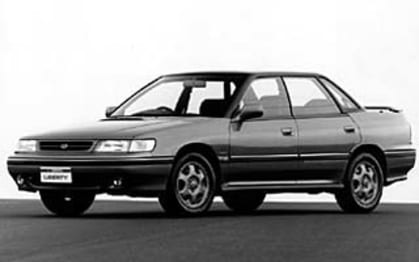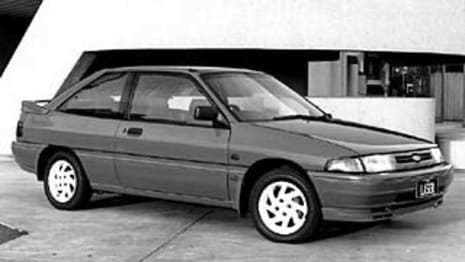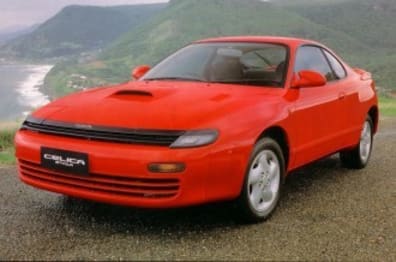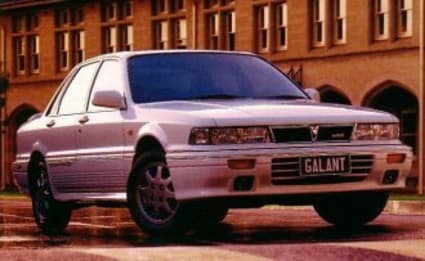
Used Subaru Liberty review: 1991-1994
- Subaru Liberty
- Subaru Liberty 1991
- Subaru Liberty 1992
- Subaru Liberty 1993
- Subaru Liberty 1994
- Subaru Liberty Reviews
- Subaru Reviews
- Subaru Sedan Range
- Subaru Wagon Range
- Sedan
- Wagon
- Subaru
- Used Car Reviews
- Buying tips
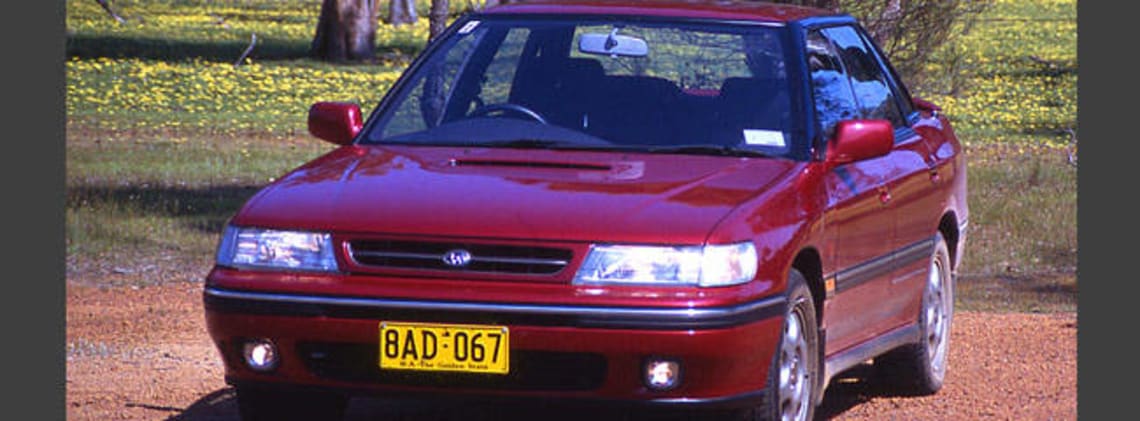
All-wheel drive is all about safety in all weather conditions on all road types, but almost as soon as those wonderful attributes were identified some rally tuner realised it also had enormous potential for rallying. It was about then that the all-wheel car went from a nice safe family car to a hotter-than-hell performance machine and we had some of the hottest special edition models, like the Subaru Liberty RS Turbo, appearing in our showrooms.
At first it was a limited edition model available to rally competitors by way of special order, but such was the demand for it that Subaru released it for general consumption. Before the WRX with which the company is so closely identified, the RS Turbo was already attracting the attention of rally enthusiasts.
MODEL WATCH
Subaru was in a period of transition in the early 1990s. Apart from its all-wheel drive models Subaru was producing cars that were struggling to stand apart from the small Japanese crowd, but in a moment of marketing genius the company decided to become an all-wheel drive only company. It was a masterstroke, one from which the company hasn’t looked back.
In late 1991 when the RS Liberty Turbo sedan was launched it looked much like its more mainstream cousin. If it wasn’t for the alloy wheels, sports rubber and modest rear wing you wouldn’t know you were looking at anything but a regular Liberty sedan. It’s not until you drove the RS Turbo that it became clear, instantly clear, that this wasn’t a family shopping trolley.
If you dared bury the right foot in the carpet the RS Turbo’s blown 2.0-litre quad-cam flat four responded with nearly 50 per cent more power and almost 40 per cent more torque than the naturally aspirated 2.2-litre engine that lurked under the standard Liberty’s bonnet. Peak power was 147 kW at 6000 revs while the torque curve reached its maximum of 260 Nm at 3600 revs.
To achieve the increased output Subaru beefed up the cylinder block, added four-coil ignition and added a liquid-cooled turbocharger and liquid/air intercooler. It then fed it through a five-speed manual gearbox and centre and rear differentials to all four wheels for a thrilling drive well beyond its modest looks suggest it’s capable of.
Given its head the RS Turbo Liberty would run hard and fast. It was capable of reaching 100 km/h in seven seconds, the standing 400-metre sprint was dismissed in 15 seconds, and it would reach 215 km/h if pressed all the way in fifth gear. As you might expect with its rally credentials, the RS Turbo LIberty was a delight on the road. It handled fast and slow corners well, was very precise and could change direction easily. The ride, while firm, wasn’t uncomfortable and soaked up bumps and potholes without being upset.
The brakes were perhaps an area for criticism. While discs were employed at all corners it lacked the added safety of ABS anti-skid electronics, which would definitely have been a bonus on a car of such high performance.
Inside, the RS Turbo LIberty offered the full accommodation of a regular four-door with quite good headroom, good legroom and foot space, even for tall occupants. The cloth-trimmed seats were both supportive and comfortable, there was a footrest for the driver’s left foot and an adjustable steering column.
Standard equipment included air-conditioning, power windows, mirrors and antenna, central locking, cruise, and there was an optional sunroof. The sound system was an AM/FM radio cassette with four speakers. A wagon version was released in 1992.
IN THE SHOP
The RS Liberty Turbo is at least 12 years old now, the last leaving dealerships in 1994, which means they will have racked up plenty of kays, some of which could well have been very hard ones. On average an early car will have done over 200,000 km, a later one around 170,000 km, but Subaru reliability is such that high kay cars can still be worth taking on.
Some early cars had rattling valve lifters that were fixed on complaint by Subaru, but some might have slipped through the system and owners have to try and find a solution themselves.
The body is fairly sturdy and stands the test of time well. Look for the usual car park dings, which are inevitable if the car has been driven daily.
Many have been modified for more performance or handling so look carefully for mods and make sure they have been well done by professionals who know what they’re doing. Also make sure those modifications don’t adversely affect the things that matter to you.
Fitting aftermarket springs and shocks, for instance, can make the ride hard and uncomfortable which diminishes its appeal as a family tourer. Look carefully for engine modifications, which might have boosted performance, but cut the reliability. Again seek expert help before buying a heavily modified car. Before you take on a car that has been modified check to ensure the modifications are legal rather than risk getting stuck with a car that doesn’t comply with the law.
IN A CRASH
Primary safety is the all-wheel drive RS Turbo Liberty’s great suit. Its handling in all conditions, boosted by its rally suspension is the perfect recipe for extracting yourself from a dicey situation. Airbags weren’t offered, but secondary safety comes down to its sturdy body construction.
OWNERS SAY
Dave Shephard has owned two RS Turbo wagons. The first was written off a few weeks after he bought it, but the second now has 260,000 km on it. When he bought them he was looking for a car with performance, but could still swallow his kite surfing gear. He says it’s a perfect compromise, a mix of power and performance with Subaru reliability.
Oliver Lever says the RS Turbo Liberty is a fantastic car for the young enthusiast or the family. Like all cars, he says, they have their shortfalls, which in the case of the RS Turbo Liberty is the gearbox. He says there’s plenty of information on them, parts are readily available, and their modest looks means they don’t come in for regular attention from the police.
Matthew Pyman has owned a 1991 RS Turbo for a year and says he has never been happier with any previous car. It is, he says, a dream to drive. He loves the handling, the rumble of the boxer engine, and the overall thrill of the drive.
Jarrod Power has owned his RS Turbo Liberty for three years. The great thing about them, he says, is that while they are quite attractive, and can be improved upon easily by lowering them and fitting a set of alloy wheels, they don't attract the attention of the police, which allows you to enjoy the driving experience. The RS Turbo Liberty gets tick in every box with its looks, performance and cost.
LOOK FOR
• Rattling valve lifters
• Illegal modifications
• Great all-wheel drive handling
• Roomy interior for family
• Combination of performance and practicality
• Good build quality
THE BOTTOM LINE
Its all-wheel drive safety makes it a great learning car for young drivers to gain experience.
RATING
75/100
Pricing
| Year | Price From | Price To |
|---|---|---|
| 1994 | $3,080 | $8,140 |
| 1993 | $2,860 | $7,700 |
| 1992 | $2,860 | $7,700 |
| 1991 | $2,860 | $7,480 |
Pricing guides
Range and Specs
| Vehicle | Specs | Price* | |
|---|---|---|---|
| LX | 2.2L, ULP, 5 SP MAN | $2,860 – 4,400 | 1991 Subaru Liberty 1991 LX Pricing and Specs |
| GX | 2.2L, ULP, 5 SP MAN | $3,850 – 5,610 | 1991 Subaru Liberty 1991 GX Pricing and Specs |
| GX | 2.2L, ULP, 5 SP MAN | $3,080 – 4,840 | 1991 Subaru Liberty 1991 GX Pricing and Specs |
| GX (awd) | 2.2L, ULP, 5 SP MAN | $3,960 – 5,830 | 1991 Subaru Liberty 1991 GX (awd) Pricing and Specs |
Other cars to consider
$3,080
Lowest price, based on third party pricing data



